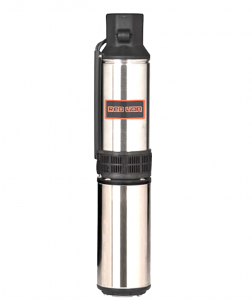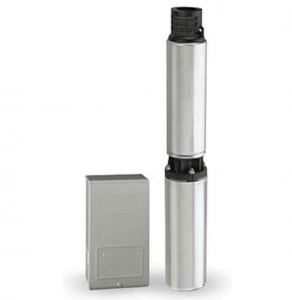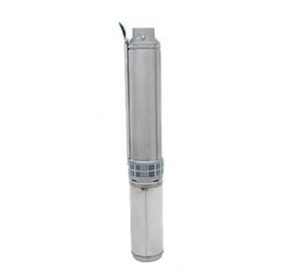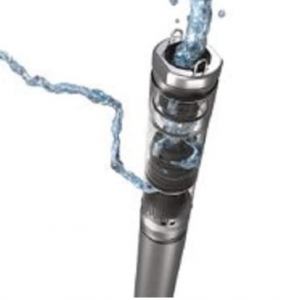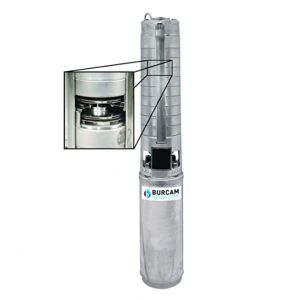If you live in a rural area, the odds are that the water system to your home is served by a well. It’s the nature of living where we do, and having been on a well for a large chunk of my life, I like not being dependent on my locality to keep things flowing to my family and me. But, that also means arranging my own maintenance for the well system, and having the best well pump helps to ensure consistent water supply and rare upkeep.
I remember when my much-younger self first saw the inner workings of a home well system. The gauge at the well head wasn’t deep enough in the ground and froze during a particularly bad winter. Everything came out of the ground as we inspected the whole system to make sure nothing else was damaged. Hundreds of feet of tubing were attached to the tow ball of a pickup truck as we hauled it out of the ground, taking a look at the well pump at the end.
Though the weather didn’t impact the pump that far below ground, it had some damage from banging into the walls of the well itself, and we had to add a guard to keep the pump working for a few more years.
Most experts will tell you that a submersible well pump, like what most rural homeowners and farmers have, will last about 10 to 15 years — hopefully more toward the higher side of that. Replacing these units aren’t cheap, and if you pay for the labor, too, the bill can really increase.
Not everyone knows all the ins and outs of their well system, unless they’ve had to do some work to it. If you buy a home, it’s unlikely that you’re given much documentation on the history of the well. In most circumstances, your well is at least 100 feet deep, and some wells can be upwards of 500 feet down! Of course, a lot of that depends on exactly where you live. Having the pump submerged into at least 25- to 30-feet of water is ideal.
» Related: Regular private well maintenance is vital to avoiding costly repairs
I have two wells on my farm — one is 183 feet and the other is 294 feet (the deeper one produces better-quality water). In recent years, we’ve had to have pumps on both wells replaced, and both required different horse powers to effectively get the water the full length and into my home, as well as get a sufficient number of gallons per minute into my pressure tank.
Having gone through that process, I learned a thing or two about well systems and trying to pick the best well pumps. After going through many options with experts, here are my Top 5 best well pumps. While we’re largely only highlighting one model from each of these well pump lines, know that there are often also similar 0.5-, 0.75, 1-, and 1.5-HP models for a lot of these available — at significantly different prices:
Red Lion 1-HP 12-GPM Submersible Well Pump
This is one of the best-selling well pumps you can find. It’s made for supplying water to rural homes, farms, and cabins that have 4-inch-or-greater diameter drilled wells to depths of about 250 feet. This pump is powered by a three-wire motor (a control box is included with all three-wire pumps) and has a built-in check valve that prevents backflow and ensures system pressure. It also has a stainless steel shell and thermoplastic discharge and motor bracket. It is is 230 volts.
Flotec 1-HP 20-GPM Submersible Well Pump
The Flotec FP3332 4-inch Submersible Well Pump is for use with wells 4 inches or larger. The Flotec well pump is energy efficient and ideal for pumps with average yields. A floating stack design that’s patented ensures that the Flotec FP3332 pump will be resistant to sand locking, and a stainless steel pump ensures that it will be resistant to corrosion. A built-in check valve and easy service control box make installing and servicing the Flotec well pump easy. It’s a three-wire, 230-volt pump.
Little Giant .5-HP 12-GPM Submersible Well Pump
Showcasing a Franklin Electric, this pump combines a long and powerful reputation in both brand name and manufacturer. The Little Giant is available with a thermoplastic discharge and motor bracket, or a stainless steel discharge and motor bracket, and it has a ceramic bearing sleeve for durability. Behind 230 volts, it also has a hex rubber bearing with an extra large surface to assure shaft stability and multiple flow channels to keep small particles away from bearing surfaces.
Grundfos 3/4-HP 10-GPM Submersible Well Pump
The Grundfos 10SQ07-200 96160141 Submersible Well Pump offers a wide performance range. The 4-inch SQ is a compact multistage centrifugal pump that can be installed in a borehole no larger than the pump itself. With their built-in electronics, SQ pumps are very easy to install and operate. Equipped with permanent magnet motors, these flexible and compact pumps offer excellent efficiency levels and will supply pump heads up to 200 meters.
BURCAM 3/4-HP 10 GPM Submersible Well Pump
The BURCAM 101131H 230-volt, 2-wire + ground deep well submersible pump is recommended for homes, cottages, and farms for installation in water wells that are 4-inch in diameter or larger. Made of non-corrosive 316 stainless steel with a NEMA standard interchangeable head that includes 12 stages of precision machined stainless steel impellers and diffusers and a hexagonal stainless steel drive shaft, this pump features a continuous duty motor for durability. It pumps up to 900 U.S. GPH and has a maximum head of 275 feet. Best efficiency is between 114 and 198 feet (with a 20/40 PSI pressure switch) or 91 to 175 feet (with a 30/50 pressure switch).
How deep should a well be?
Many wells that we’ve encountered are at least 100 feet deep, and some wells can even be drilled as deep as 500 feet. It depends exactly on where you live and how close your drilling technician can get to a good vein of water within the earth. Having a well pump submerged into at least 25- to 30-feet of water is ideal, and in many instances, they’ll last you 10 to 15 years.
How much does it cost to install a well?
Certainly a lot will depend on your location, and prices fluctuate along with the economy, but it’s likely you’ll end up paying $15 to $30 a foot (so $1,500 to $3,000 for a 100-foot well). And be aware that if the drilling doesn’t strike viable water, you still have to pay for that work. Usually a technician will charge you the low end of their price range for an unsuccessful attempt. Then you pay for the next attempt at drilling. Also note that there may be permitting regulations in your area, which can add to the cost.
